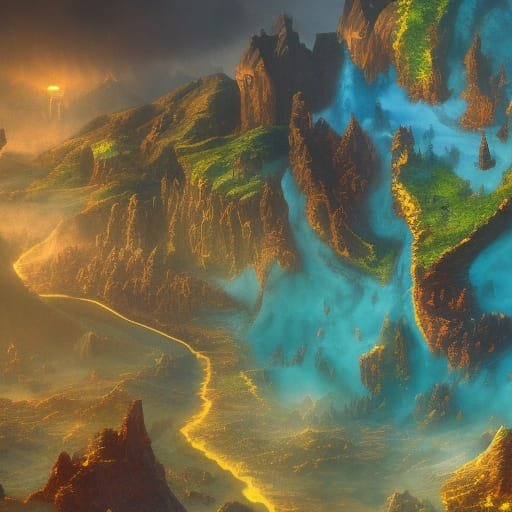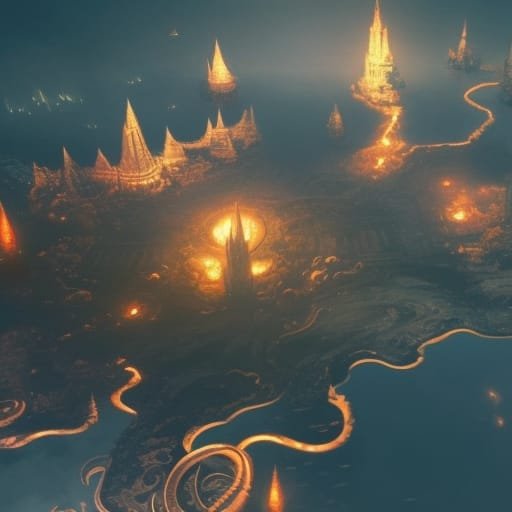Creating Realistic and Immersive Fantasy Worlds: A Guide to Map-making Techniques
Fantasy literature has been a beloved genre for centuries, and with the advent of technology, the ability to create fully-realised and immersive fantasy worlds has never been easier.
As a fantasy author, world-building is a crucial aspect of your craft. It sets the stage for your characters and their actions, and can make or break the believability of your story.
One of the most important elements of world-building is creating a believable and detailed map of your fantasy world. A well-crafted map not only helps to orient your readers, but it also serves as a visual representation of the cultures, politics, and geography of your world.
In this guide, I will discuss the various techniques and tools that you can use to create realistic and immersive fantasy maps. I will cover everything from the basics of map-making to more advanced techniques that will help you to bring your fantasy world to life.
The Basics of Fantasy Map-making
First and foremost, it's important to have a clear understanding of the geography of your fantasy world. This includes the layout of the land, the location of rivers and oceans, and the placement of mountains and other natural features. Having a clear understanding of your world's geography will help to establish the cultures and politics of your world.
One of the first things you can do when creating a fantasy map is to decide on the overall style and aesthetic of the world.
Do you want it to be dark and foreboding, or bright and magical?
Do you want it to be inspired by real-world cultures and landscapes, or completely unique and fantastical?
Fun fact: For my upcoming novel “Legacy of the Spirit Rings” I based the layout of my world map on a Monet painting. See if you can work out which one once my books releases.
Once you have a clear idea of the overall style, you can start to build out the details.
One technique that is commonly used in fantasy map-making is the use of fractals. Fractals are mathematical patterns that can be used to create natural-looking terrain, such as mountains and coastlines. This technique can be used in combination with traditional drawing methods, such as pen and ink, to create highly detailed and realistic maps.
Another important aspect of fantasy map-making is the use of symbols and icons to represent different features on your map. These can include cities, towns, and other settlements, as well as landmarks and geographical features. Using symbols and icons can help to convey information about your world in a clear and concise manner.
One technique that can help with this is using real-world inspiration for your fantasy world. By studying real-world cultures and geography, you can add depth and verisimilitude to your fantasy world. For example, if I was creating a fantasy world with a Mediterranean-inspired culture, I would study the history and architecture of ancient Greece and Rome to inform the design of my fantasy city.
Another technique that can help with creating a believable fantasy world is to use a scale for your map. This means creating a sense of distance and size for the different locations in your world. For example, when creating my map, if one city is more powerful than another, it is represented on the map as larger than others.
To add even more realism to your fantasy world, consider incorporating different types of terrain and weather patterns. Different regions in your world should have different climates and natural features, which can affect the culture and politics of those regions. This one might see obvious, but if you know the weather and terrain you can easily work out what the culture will be as well as the characteristics of the natives to the area.
It's important to remember that a fantasy map is not a static thing.
As your story and world-building develops, your map should evolve as well. The map should reflect the changes and events that happen in your story and should be updated accordingly.
It is important to remember that a fantasy map is not just a static image, but a living and breathing part of the story. It should be used as a tool to help tell the story and bring the world to life for the reader. With the right techniques and a bit of imagination, you can create a fantasy world that is both believable and captivating.
Pro tip: Don’t be afraid to make world altering events to your story, like a volcanic eruption or tsunami, which in turn changes the shape of your map.
An overlooked aspects of fantasy map-making is the use of symbolism and metaphor.
By incorporating symbols and metaphors into the map, you can create a deeper, more meaningful world that speaks to the reader on a deeper level. For example, a river may represent a journey or a mountain may represent a challenge to be overcome. Or a city a character of its own.
In addition to these techniques, there are a variety of software programs and online tools that can be used to create fantasy maps. These include programs such as Photoshop and GIMP, as well as online map-making tools such as Campaign Cartographer and Hexographer. These tools can be used to create highly detailed and customisable maps that can be used in your fantasy novels.
In conclusion
Map-making is an essential part of creating a realistic and immersive fantasy world. By deciding on the overall style and aesthetic, incorporating realistic geographical features, incorporating cultural and political elements, using symbolism and metaphor and remembering that the map is a living part of the story, you can create fantasy maps that are both believable and captivating for the readers.
Till next time
PS - Don’t forget to sign up below for updates on new book releases and blog articles. Also, drop by my Patreon and socials


